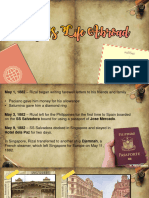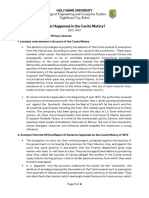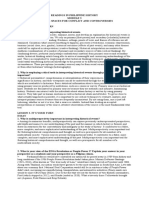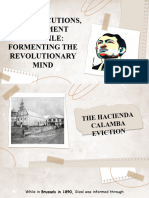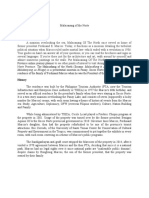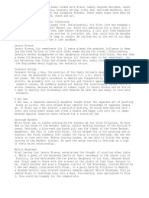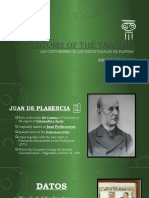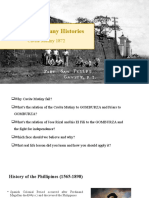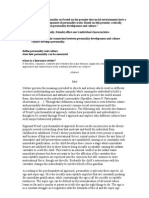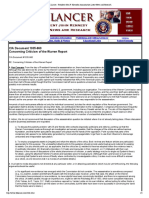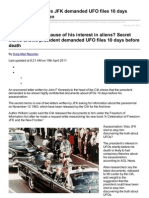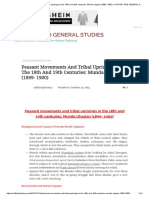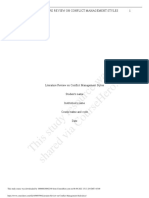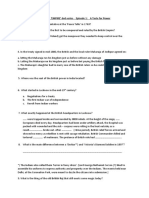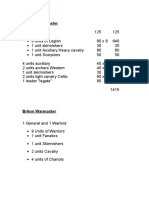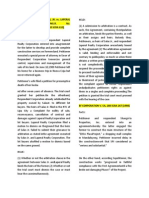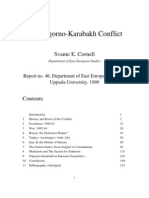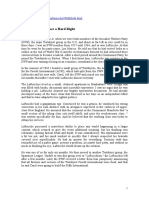0% found this document useful (0 votes)
875 views9 pagesCavite Mutiny Rizal Report
The Cavite Mutiny of 1872 was an uprising of around 200 Filipino military personnel and laborers at Fort San Felipe in Cavite, Philippines who believed it would spark a national uprising against Spanish rule. However, the mutiny was unsuccessful and many participants were executed. This led to further crackdowns on growing Filipino nationalism and the persecution of priests Mariano Gomez, Jose Burgos, and Jacinto Zamora - collectively known as GomBurZa - who were falsely accused of orchestrating the mutiny and publicly executed. The Cavite Mutiny is seen as beginning the rise of Filipino nationalism that eventually led to the Philippine Revolution of 1896.
Uploaded by
Amy SarausaCopyright
© © All Rights Reserved
We take content rights seriously. If you suspect this is your content, claim it here.
Available Formats
Download as PPTX, PDF, TXT or read online on Scribd
0% found this document useful (0 votes)
875 views9 pagesCavite Mutiny Rizal Report
The Cavite Mutiny of 1872 was an uprising of around 200 Filipino military personnel and laborers at Fort San Felipe in Cavite, Philippines who believed it would spark a national uprising against Spanish rule. However, the mutiny was unsuccessful and many participants were executed. This led to further crackdowns on growing Filipino nationalism and the persecution of priests Mariano Gomez, Jose Burgos, and Jacinto Zamora - collectively known as GomBurZa - who were falsely accused of orchestrating the mutiny and publicly executed. The Cavite Mutiny is seen as beginning the rise of Filipino nationalism that eventually led to the Philippine Revolution of 1896.
Uploaded by
Amy SarausaCopyright
© © All Rights Reserved
We take content rights seriously. If you suspect this is your content, claim it here.
Available Formats
Download as PPTX, PDF, TXT or read online on Scribd
/ 9
















